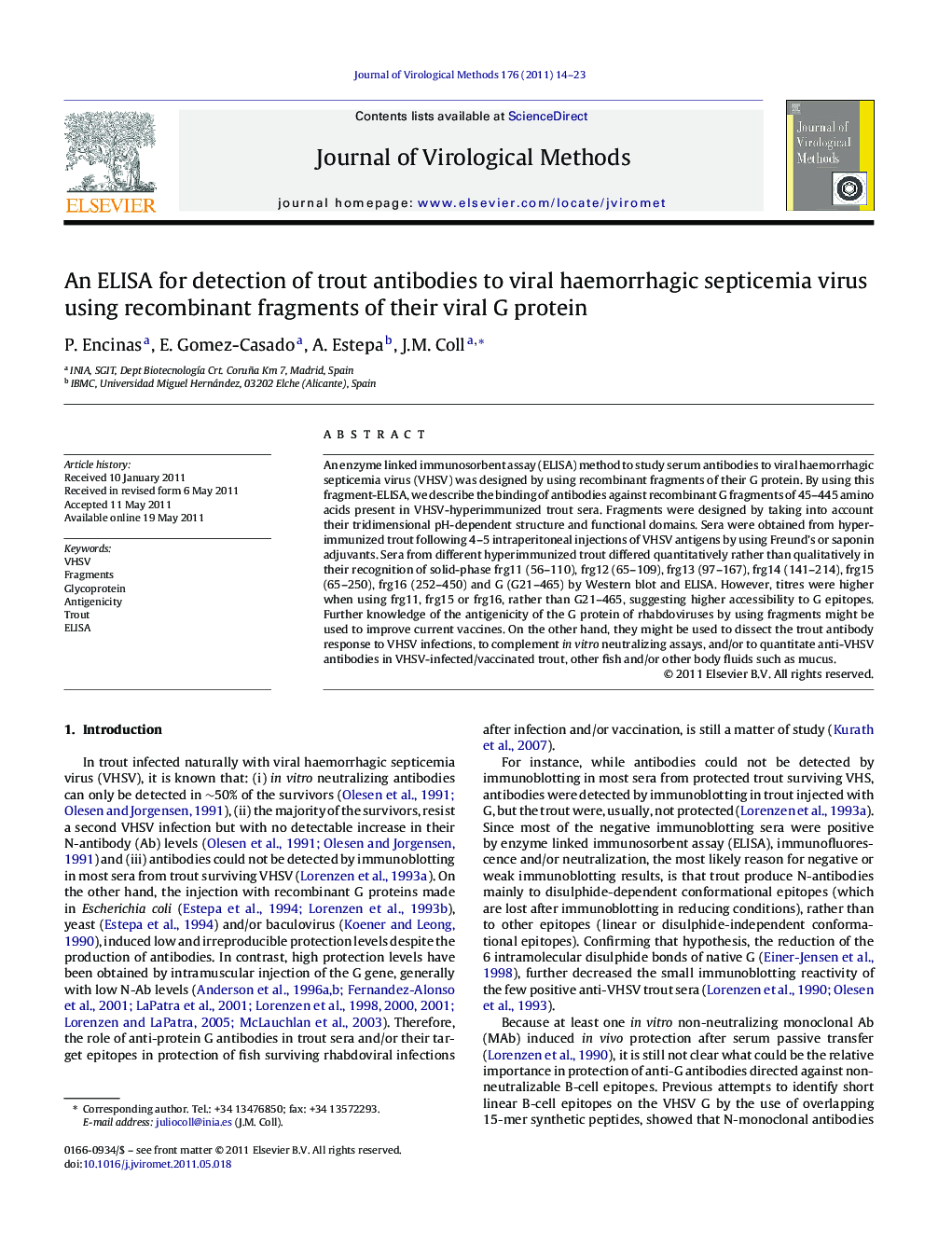| Article ID | Journal | Published Year | Pages | File Type |
|---|---|---|---|---|
| 3406865 | Journal of Virological Methods | 2011 | 10 Pages |
An enzyme linked immunosorbent assay (ELISA) method to study serum antibodies to viral haemorrhagic septicemia virus (VHSV) was designed by using recombinant fragments of their G protein. By using this fragment-ELISA, we describe the binding of antibodies against recombinant G fragments of 45–445 amino acids present in VHSV-hyperimmunized trout sera. Fragments were designed by taking into account their tridimensional pH-dependent structure and functional domains. Sera were obtained from hyperimmunized trout following 4–5 intraperitoneal injections of VHSV antigens by using Freund's or saponin adjuvants. Sera from different hyperimmunized trout differed quantitatively rather than qualitatively in their recognition of solid-phase frg11 (56–110), frg12 (65–109), frg13 (97–167), frg14 (141–214), frg15 (65–250), frg16 (252–450) and G (G21–465) by Western blot and ELISA. However, titres were higher when using frg11, frg15 or frg16, rather than G21–465, suggesting higher accessibility to G epitopes. Further knowledge of the antigenicity of the G protein of rhabdoviruses by using fragments might be used to improve current vaccines. On the other hand, they might be used to dissect the trout antibody response to VHSV infections, to complement in vitro neutralizing assays, and/or to quantitate anti-VHSV antibodies in VHSV-infected/vaccinated trout, other fish and/or other body fluids such as mucus.
► An ELISA for trout antibodies to viral haemorrhagic septicemia virus (VHSV) is described. ► The method uses trout sera and recombinant fragments of the VHSV G protein. ► Higher accessibility to G epitopes by using fragments rather than whole G is demonstrated. ► Fragment-ELISA can be used to follow-up vaccination, other fish and/or fluids (ie.: mucus).
